The Tesla Model 3 interior is unlike anything we have ever seen before
The Model 3 is Tesla's long-awaited, all-electric vehicle for the masses. It's smaller than the Model 3, it's big-brother sedan.

Flush, chrome door handles are simply the beginning of what will be a complete minimalist experience.
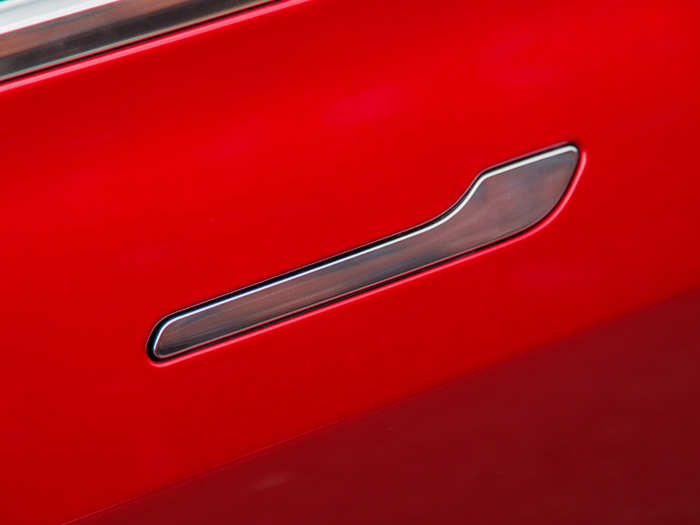
Von Holzhausen's minimalism serves several purposes.
First, it's all about who he is and how he believes cars should look and feel. Second, it symbolism Tesla's overall philosophy about the automobile: cars shouldn't be complicated.
Finally, it connects Tesla with the world of consumer technology. The Model 3 could fairly be called the Apple iPhone of cars, and it has been!
Let's slip inside ...
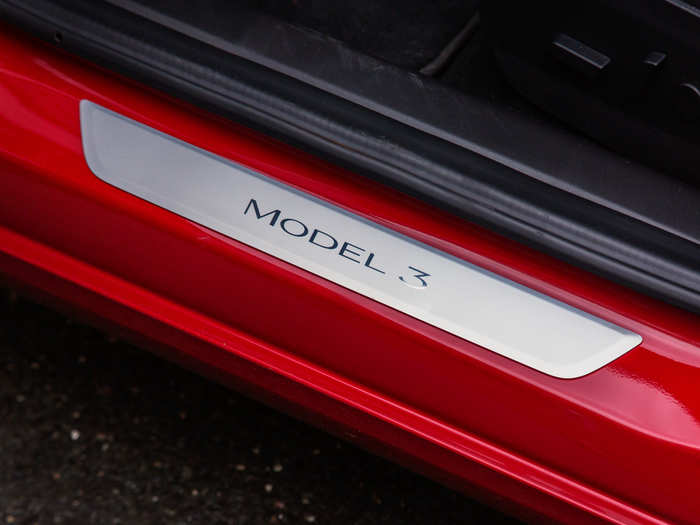
Everything that isn't absolutely necessary has been taken away.
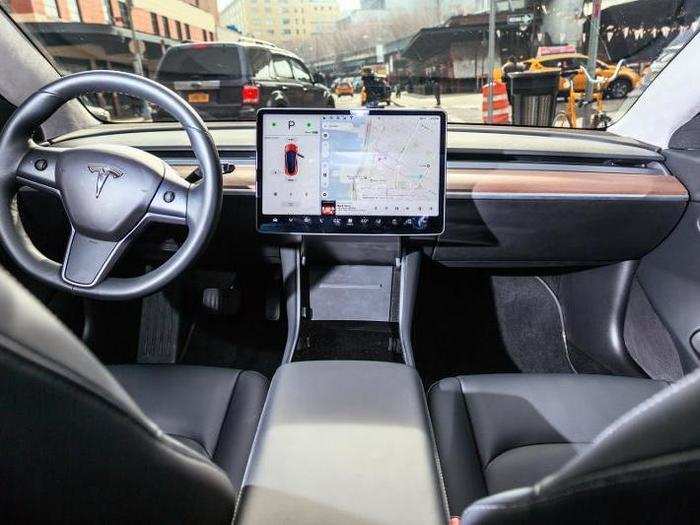
Form, meet function.
Up front, we have two seats, a leather-wrapped steering wheel with a pair of trackballs and two column stalks, a center compartment, that large central touchscreen to control nearly every vehicle function, and a side-to-side strip of open-grain wood.
There's no traditional instrument cluster, no mess of buttons and switches and knobs on the steering wheel, and not even any obvious air vents.
It's worth pointing out that we've seen this idea before. You can look at an old Toyota Echo — a cheap compact car, now discontinued — and find a minimal digital instrument cluster in the center of the dashboard.
But of course, in the Model 3, the idea has been made beautiful and refined. This is the Model 3's overarching automotive theme: take good ideas that might have been poorly executed before and recontextualize them in a way that's radically new.
The open-grain wood and brushed metallic trim is the only real deviation from the black interior color.
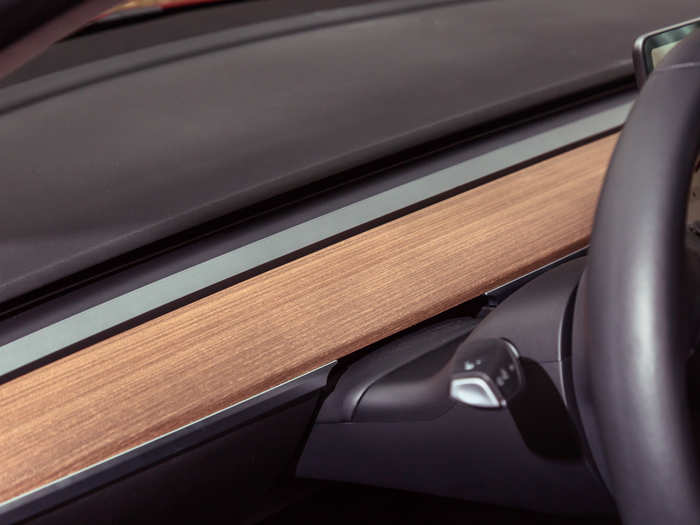
It's a brilliant touch. The Model S, when it first arrived, also aimed for a fairly minimalist interior. But some folks complained that it was so minimalist that it came off as insufficiently luxurious — for what was supposed to be a luxury car.
Tesla has since fixed that, making the lastest editions of the Model S far fancier inside.
With the Model 3, is wasn't necessary to aim for luxury credibility. A $35,000 base price meant that the luxury buyer wasn't necessarily customer number one. However, an interior that was all black leather and brushed metal would have been too chilly.
The wood, a Scandinavian touch (we've seen something similar in Volvos of late), provides warmth and texture, tactility. And it definitely feels pleasing to touch.
For what it's worth, the quality of the plastics, often a sticking point in less-expensive vehicles, is quite high in the Model 3. Our tester also featured some lovely light gray and black Alcantara throughout, and although Tesla has since dropped the material, a type of synthetic suede, it also added yet another a nice tactile vibe.
The 15-inch touchscreen has become a calling card for the Model 3.
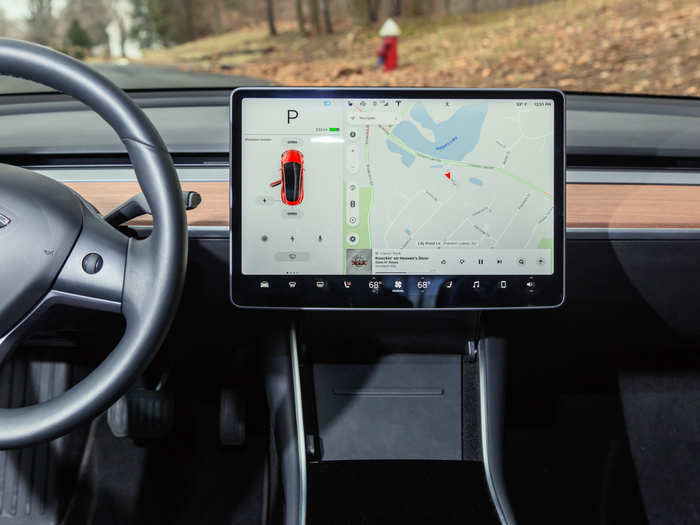
Practically everything you need to operate the car is in there. It takes some getting used to, but the learning curve isn't crazy-steep. And it does allow minimalism to reign.
The right side of the screen is where you look to monitor Model 3 operations that you would otherwise have right in front of you, as the driver.
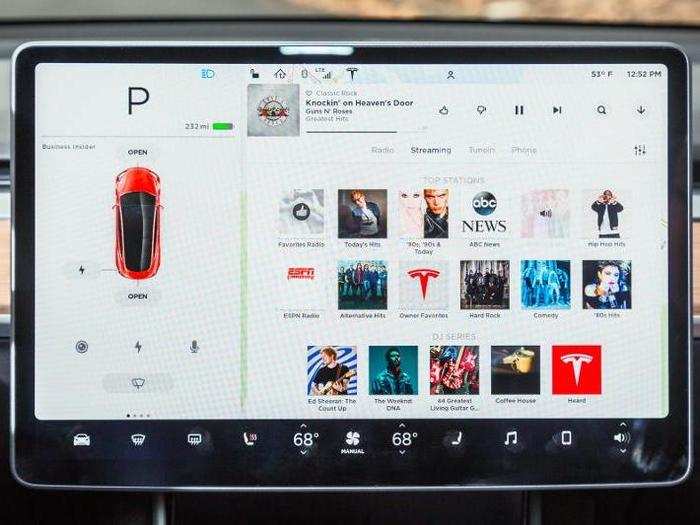
Once you get moving, the "P" is replaced by a speedometer. Autopilot, Tesla's semi-self-driving technology, can also be monitored in this area.
There isn't much reason to have more than a speedometer in a modern car, anyway. The traditional gauges date from a time when keeping track of how hard the internal-combustion engine was running was important and you need to know if how hot oil and fluids were.
It's actually quite soothing to have nothing but the road in front of you and that strip of wood to look at when you're behind the wheel.
The little trackballs are controversial. This is really the only major minimalist decision in the Model 3 that's questionable.
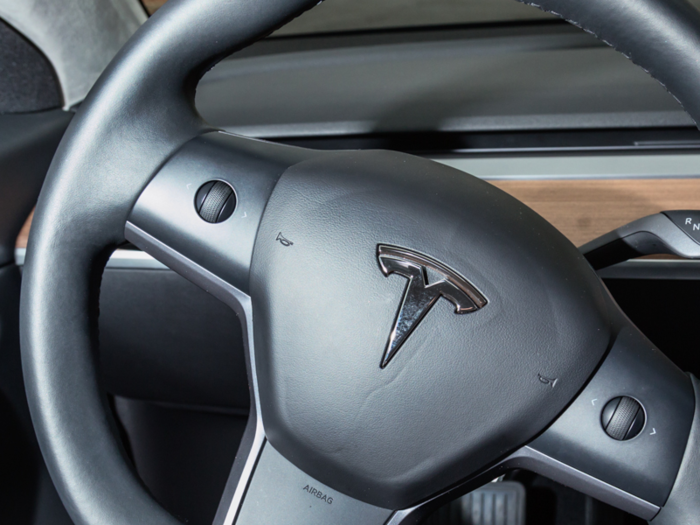
On the one hand, it's cool to have a throwback steering wheel that is basically only there for ... steering!
But on the other, it can be distracting to have to move between the touchscreen and the wheels to do stuff like adjust the mirrors. A big problem, and one that Tesla is addressing, is that when cruise control or Autopilot is engaged, you can use the trackballs to speed up or slow down.
Cars now have a lot of buttons and switches on the steering wheel, and the thinking is that this keeps the driver's hands where they're supposed to be. Tesla has zagged when everyone else is zigging mainly because the company wants to make the Model 3 a very simple car to mass-produce.
An ultra-simple steering wheel helps to accomplish that. It also looks forward to a time when cars are fully autonomous and don't require any controls, instruments, or gauges.
(The gearshift, so you know, is located on one of the column stalks. Note to automakers in love with joysticks between the front seats — Tesla's approach is better.)
Tesla says that the hazard flasher button, up at the front of the roof, is the only button in the whole car.
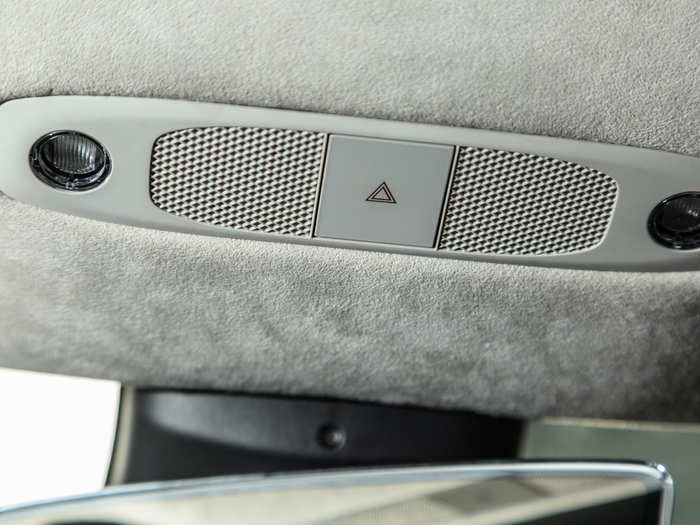
Admittedly, it took us a while to find the button.
OK, Tesla had to show us where it was. On every other car around, it is on the dash or around the steering wheel.
It also has to be in the car — government regulations. And once you know where to find it, it's not an issue to have it located up there above the rear-view mirror, between the interior lights.
But guess what? It's not really the only button in the car.
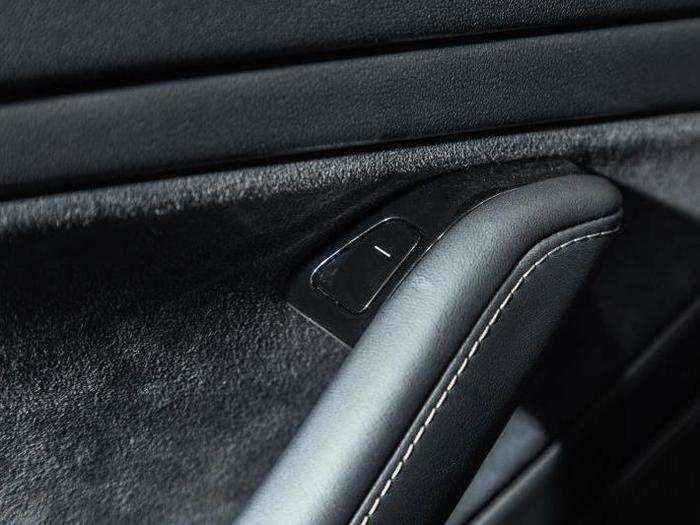
All four doors are opened from inside with pushbuttons.
Once again, the elimination of a mechanical latch or handle supports the minimalist approach — and simplifies the assembly process.
The rear seats are a bench design. And made in-house by Tesla.
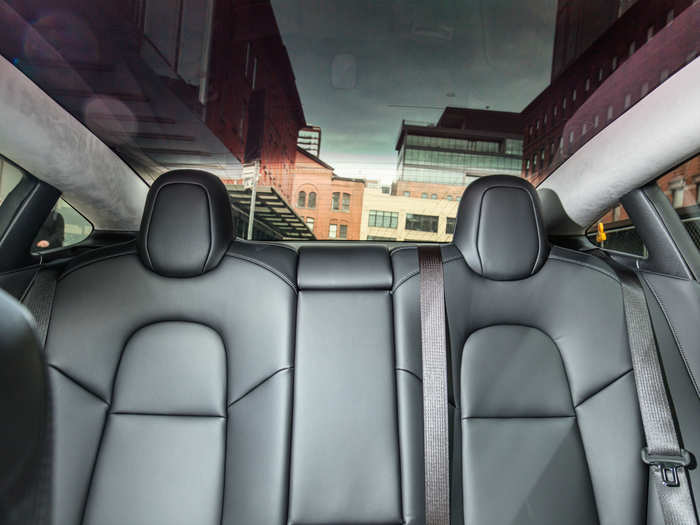
Tesla operates its own seat factory, not too far from its main assembly factory.
The front seats are comfy. They reminded me of memory foam mattresses and pillows. The upholstery, by the way, might look like real leather, but it's synthetic.
The rear seats could be called too austere. They aren't as comfortable or supportive as the front seats. But because the Model 3 is an electric car, the entire cabin is free of an intrusions from engine or drivetrain components — the battery is under the floor, and the single motor is over the rear axle.
So the back seat is quite roomy. Ben and I had two passengers on our trip, and both were tall. They had no complaints about legroom.
So there you have it: the Model 3, Tesla's minimalist masterpiece for the masses.
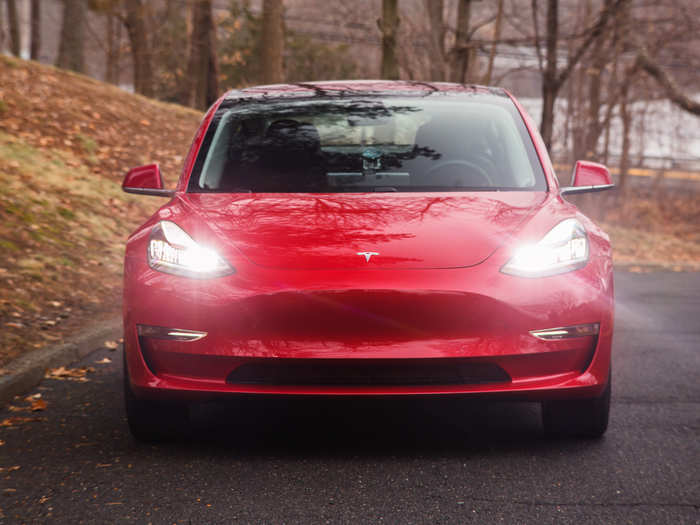
It is genuinely a triumph of exterior and interior design seamlessly integrating — and becoming in the process self-reinforcing.
The Model 3 is, ultimately, a tremendous package. Various ideas that have been around the auto industry for a while have been refined and, wherever possible, reduced to their essence.
The result is extremely satisfying. Minimalism might not be your thing, but you'll be hard-pressed to deny that it isn't successful in the Model 3.
Popular Right Now
Advertisement